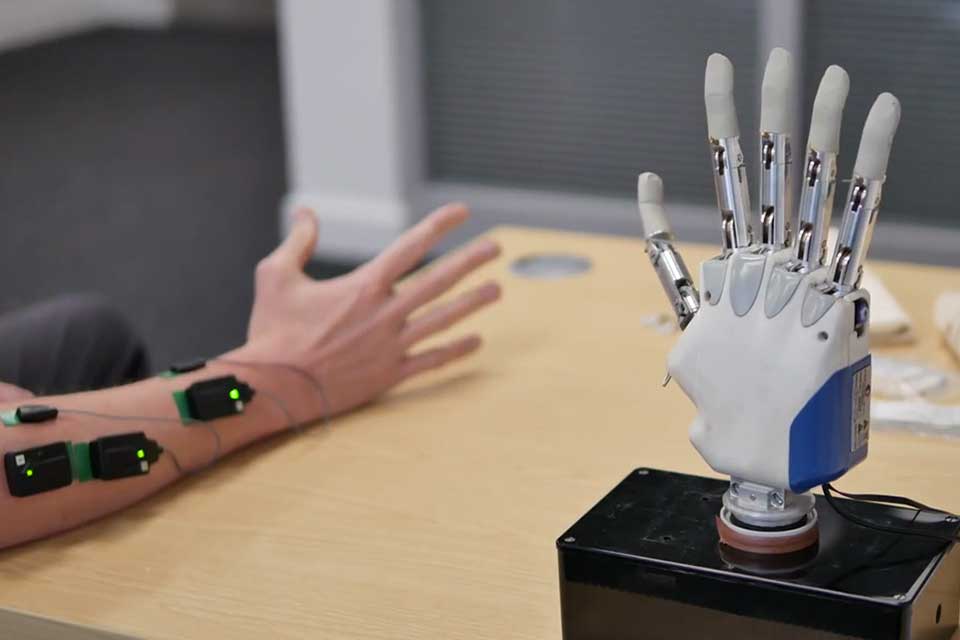“A substantial number of lower-limb prosthesis clients desire more from their prosthesis device and clinical provider service.”
That’s the top-line takeaway from a new, wide-ranging survey of more than 2,000 amputees. And it’s not exactly an earth-shattering finding. If you’re even slightly engaged with the limb-loss community, you’ve encountered the commonplace frustrations related to chronic pain, imperfect socket fit, tone-deaf clinicians, hostile insurance companies, and so forth.
The big reveal in this study, which appears in the current issue of Prosthetics and Orthotics International, is what lies at the root of this dissatisfaction: everyday activities. A majority of lower-limb amputees find it challenging to do routine tasks like climbing stairs, lifting objects off the floor, walking in bad weather, and carrying a plate of food. Taken together, these challenges significantly diminish amputees’ quality of life: 61 percent of the survey respondents reported a low health-related quality of life (HRQOL).
“This is the first study to explore satisfaction, quality of life, and functional performance in a large population of LLP clients using psychometric instruments validated in the LLP population,” claim the authors, who include prosthetists and kinesiologists from Auburn, Louisiana State, and Alabama State universities. They add that their results “provide a clearer image of the aspects of rehabilitation goals that are of importance to this population.”
Even Young, Healthy Amputees Face Challenges
The results seem especially noteworthy because the survey group is vastly younger and healthier than the overall limb-loss population. More than 80 percent of the participants fell between the ages of 19 and 39, whereas the Amputee Coalition’s 2024 prevalence study found that amputees are predominantly age 45 or older. And only 20 percent of the survey respondents lost limbs due to diabetes, cancer, or infection, versus the AC’s estimate that nearly 60 percent of amputees have diabetes and/or other vascular diseases.
If HRQOL scores are low among relatively young, healthy lower-limb prosthesis users, it seems safe to surmise that scores are worse across the general amputee community.
Despite those somewhat alarming QOL scores, most survey respondents aren’t pointing the finger at either their prosthesis or their prosthetist. Majorities report overall satisfaction with their device (56 percent) and their clinical care (63 percent).
With respect to prostheses themselves, the main areas of dissatisfaction were skin irritation, residual limb discomfort, pain, high purchase and maintenance costs, and damage to clothes. The top complaints about clinical interaction were scheduling difficulties, long wait times during visits, and lack of partnership in decision making. However, none of the most common gripes surpassed the 50 percent threshold; the most widely shared beef about devices (skin abrasions) was only expressed by 49 percent of respondents, while the most common fault with clinical care (long wait times) was expressed by only 42 percent.
And yet well over half (58 percent) recorded low levels of functional status, with 20 to 30 percent saying they either cannot perform, or can only perform with great difficulty, tasks such as climbing stairs, walking on unlevel ground, or walking in bad weather. Even maintaining balance while standing posed a major challenge for one in six survey respondents—and, to repeat, these are overwhelmingly young, healthy amputees in their 20s and 30s.
Implications for Amputee Rehabilitation
The authors analyzed the relationships among their various findings via path analysis, a statistical method for teasing cause-effect dynamics among different study variables. Their model suggests that “increasing balance confidence significantly improves both prosthetic device and provider service satisfaction” and that “prosthetic device satisfaction is significantly improved by reduction in fear of falling.” One section of the survey, the Activity-Specific Balance Confidence (ABC) module, had a particularly strong influence on overall satisfaction with clinical care.
To beat a dead horse: If the 20 and 30somethings in this survey are so shaky on their feet that it reduces their quality of life, we can only assume this effect is even more pronounced for the 50-and-older amputees who make up the bulk of the community. Overall, the paper concludes, “interventions targeted at improving balance, fall risk, and functional movement may significantly reduce [prosthesis] rejection. . . . .There is need for ongoing patient-centered feedback before, during, and after prosthesis prescription and rehabilitation.”
The paper appeared in the August edition of Prosthetics and Orthotics International. The full, open-source study is available online.














